How to Service Automatic Transmission Fluid: A Comprehensive Guide
Servicing automatic transmission fluid (ATF) is a crucial maintenance task that ensures the longevity and optimal performance of an automatic transmission system. For automotive mechanics, understanding the ins and outs of this process can significantly impact customer satisfaction and vehicle reliability. In this comprehensive guide, we’ll walk through the essential steps and considerations for servicing ATF.
Table of Contents
- Introduction to Automatic Transmission Fluid (ATF)
- Why ATF Service is Important
- Tools and Materials Needed
- Preparing for the Service
- Draining the Old Transmission Fluid
- Replacing the Transmission Filter
- Flushing the Transmission
- Refilling with New Transmission Fluid
- Checking for Leaks and Final Inspection
- Tips for Optimal Transmission Health
- Conclusion
1. Introduction to Automatic Transmission Fluid (ATF)
Automatic transmission fluid is a specialized lubricant designed for automatic transmissions. It serves multiple functions, including lubrication, cooling, and hydraulic pressure transmission, which are critical for smooth gear shifts and overall transmission health. ATF comes in various types, and it’s essential to use the correct type specified by the vehicle manufacturer.
Different ATF types are formulated to meet the specific requirements of various transmission systems. For instance, some fluids are designed to operate at higher temperatures, while others have additives to enhance the friction characteristics needed for specific transmission designs. Using the wrong type of ATF can lead to suboptimal performance or even damage the transmission.
2. Why ATF Service is Important
Regular ATF service is vital for several reasons:
- Prevents Transmission Wear and Tear: Over time, ATF degrades and becomes contaminated with metal particles and other debris, which can cause excessive wear.
- Maintains Smooth Gear Shifts: Fresh ATF ensures that the hydraulic systems operate correctly, facilitating smooth and efficient gear changes.
- Extends Transmission Lifespan: Regular maintenance helps avoid costly repairs and prolongs the life of the transmission.
- Improves Fuel Efficiency: A well-maintained transmission can enhance the vehicle’s overall efficiency and performance.
Ignoring ATF maintenance can lead to symptoms such as rough or delayed shifting, slipping gears, and overheating. In severe cases, neglected ATF can cause total transmission failure, necessitating expensive repairs or replacements. Therefore, educating vehicle owners about the importance of timely ATF service is crucial for their vehicle’s health and performance.
3. Tools and Materials Needed
Before starting the service, gather the necessary tools and materials:
- Transmission Fluid (correct type and quantity)
- Transmission Filter (if applicable)
- Gasket or Sealing Ring (if required)
- Drain Pan
- Socket Set and Wrenches
- Funnel
- Jack and Jack Stands or Vehicle Lift
- Shop Rags
- Safety Glasses and Gloves
- Torque Wrench
- Service Manual: Always have the vehicle’s service manual on hand for specific instructions and torque settings.
Having the right tools and materials is essential for performing a thorough and efficient ATF service. Using the correct tools helps prevent damage to transmission components and ensures that the job is done safely and correctly.
4. Preparing for the Service
- Safety First: Ensure the vehicle is parked on a level surface and the engine is cool. Engage the parking brake.
- Lift the Vehicle: Use a jack and jack stands or a vehicle lift to elevate the car, allowing access to the transmission pan.
- Locate the Transmission Pan: Refer to the vehicle’s service manual to locate the transmission pan and identify any specific instructions for your vehicle model.
- Gather Your Tools: Lay out all the tools and materials within easy reach to streamline the service process.
Preparation is key to a successful ATF service. Ensuring that all tools and materials are readily available and the vehicle is safely positioned will save time and reduce the risk of accidents or mistakes during the procedure.
5. Draining the Old Transmission Fluid
- Place the Drain Pan: Position the drain pan beneath the transmission pan to catch the old fluid.
- Remove the Drain Plug: Carefully remove the drain plug, allowing the fluid to drain completely. This process may take several minutes.
- Remove the Transmission Pan: Once drained, remove the bolts securing the transmission pan and carefully lower it. Be cautious of any remaining fluid that might spill out.
- Clean the Pan: Thoroughly clean the transmission pan and the magnet inside it. The magnet collects metal shavings, indicating the condition of the transmission.
Draining the old ATF is a straightforward but critical step. It’s essential to allow all the fluid to drain out to remove as many contaminants as possible. Cleaning the pan and magnet helps assess the wear and tear inside the transmission.
6. Replacing the Transmission Filter
- Remove the Old Filter: With the transmission pan removed, locate the transmission filter and carefully remove it. Some filters are held in place by bolts, while others simply snap in.
- Install the New Filter: Install the new filter, ensuring it is securely in place. Double-check the service manual for any specific instructions or torque settings.
The transmission filter plays a vital role in trapping contaminants and ensuring that only clean fluid circulates through the transmission. Replacing the filter as part of the ATF service is crucial for maintaining the health of the transmission system.
7. Flushing the Transmission (Optional but Recommended)
Flushing the transmission involves circulating new fluid through the system to remove any remaining old fluid and contaminants. This step is particularly beneficial for high-mileage vehicles or those experiencing shifting issues.
- Disconnect the Cooler Line: Locate the transmission cooler line and disconnect it. This line typically runs from the transmission to the radiator.
- Attach a Flush Machine (if available): If you have access to a transmission flush machine, attach it to the cooler line. Otherwise, you can perform a manual flush by running the engine and periodically adding new fluid while draining the old fluid from the cooler line.
- Run the Engine: Start the engine and allow it to run until clean fluid is observed flowing from the cooler line.
- Reconnect the Cooler Line: Once the flush is complete, reconnect the cooler line securely.
Flushing the transmission ensures that all the old fluid and contaminants are removed, which can be particularly important for high-mileage or neglected transmissions. This process can help restore smooth shifting and prolong the transmission’s life.
8. Refilling with New Transmission Fluid
- Install the Transmission Pan: Reattach the transmission pan with a new gasket or sealing ring if required. Tighten the bolts to the manufacturer’s specified torque settings.
- Refill the Transmission: Using a funnel, pour the new transmission fluid into the dipstick tube or fill port. Add the fluid gradually, checking the level frequently to avoid overfilling.
- Check the Fluid Level: Start the engine and let it idle. With the engine running and the transmission in “Park,” check the fluid level using the dipstick. Add more fluid if necessary to reach the proper level.
Refilling the transmission with the correct amount and type of fluid is critical for ensuring optimal performance. Overfilling or underfilling can lead to transmission problems, so it’s important to check the fluid level carefully.
9. Checking for Leaks and Final Inspection
- Inspect for Leaks: With the engine running, inspect the transmission pan and cooler lines for any signs of leaks. Tighten any loose connections if necessary.
- Test Drive: Lower the vehicle and take it for a test drive. Pay attention to how the transmission shifts and listen for any unusual noises.
- Final Fluid Check: After the test drive, recheck the transmission fluid level and top up if needed.
A thorough final inspection and test drive are essential to ensure that the ATF service has been performed correctly and that the transmission is operating smoothly. Addressing any issues immediately can prevent further problems down the road.
10. Tips for Optimal Transmission Health
- Regular Maintenance: Stick to the vehicle manufacturer’s recommended maintenance schedule for ATF service.
- Use the Correct Fluid: Always use the type of transmission fluid specified in the owner’s manual.
- Monitor for Issues: Keep an eye out for signs of transmission problems, such as slipping gears, delayed shifts, or unusual noises.
- Avoid Overheating: Overheating can cause significant damage to the transmission. Ensure the cooling system is in good condition.
- Drive Smoothly: Avoid aggressive driving habits that can put unnecessary strain on the transmission.
Maintaining transmission health involves regular checks and proactive measures. By following these tips, mechanics can help vehicle owners keep their transmissions in top condition, ensuring reliable performance and longevity.
11. Conclusion
Servicing automatic transmission fluid is a vital maintenance task that ensures the smooth operation and longevity of a vehicle’s transmission system. By following the steps outlined in this comprehensive guide, automotive mechanics can confidently perform ATF services, contributing to the overall health and performance of the vehicles they work on. Regular maintenance and attention to detail can prevent costly repairs and keep customers satisfied with their vehicle’s performance.
By investing the time and effort into properly servicing automatic transmission fluid, mechanics can enhance their reputation for reliability and expertise, fostering trust and loyalty among their clients. Happy servicing!
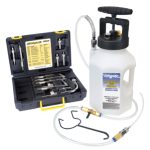

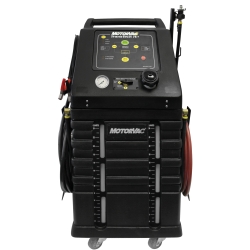

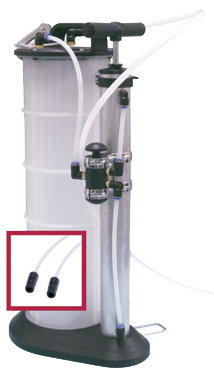
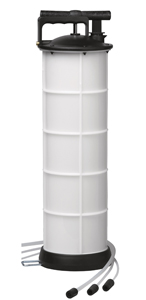

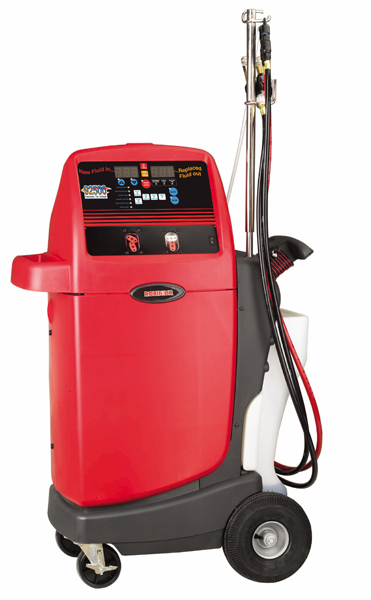


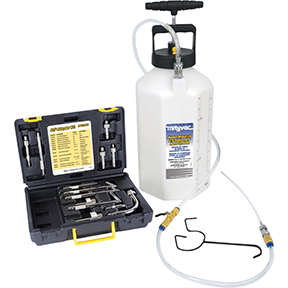

Follow us on social media